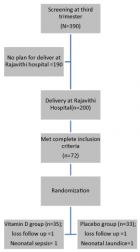About Central Forensic Science Laboratory
Central Forensic Science Laboratory
Articles by Central Forensic Science Laboratory
Application and utility of alternative methods in isolation of pure cells from forensic biological mixtures in modern-day: a review
Published on: 23rd August, 2021
OCLC Number/Unique Identifier: 9206128467
Development of genetic profiles from the biological mixtures has remained challenging, although modern-day technologies may help forensic scientists to attain a reliable genetic profile in the identification of the accused.
In the case of rape, vaginal swab exhibits usually contain epithelial cells of victims and sperm cells of accused, such samples are more challenging when there is more than one contributor. In such cases, separation of distinct cells from a mixture that includes blood cells, epithelial cells and sperm cells for their single genetic profile is important.
In the last ten decades several new techniques were developed and invented for the separation of single cell from the biological mixture that includes differential lysis, laser micro-dissection, cell sorting (FACS), sieve-based filtration, (vi) micro-fluidic devices or immunomagnetic beads cell separation of fresh samples, and the magnetic activated cell sorting (MACS).
Out of them, some techniques have been commonly applied for cell separation in forensic biology. Each technique has its own limitation. Some recent studies showed, magnetic activated cell sorting (MACS), laser capture microdissection (LCM), DEPArray technology and fluorescence activated cell sorting (FACS) has proved to be effective in separation of single cell from cell mixtures.
Therefore, in this review we have evaluated these four alternative methods and their potential application in the modern-day over the others for the separation of a single cell from the mixture. In this review we also discuss the advantage of these methods and their modern–day applicability and acceptance in the forensic world.
Rapid and sensitive identification of cow and buffalo species and gender in tissue/meat samples impounded from different spots in Delhi NCR India by Real Time PCR
Published on: 12th January, 2022
OCLC Number/Unique Identifier: 9395225158
The objective of this study was to obtain a fast, accurate and reliable method of species identification of unknown biological samples for forensic applications, especially in illegal trade of animals as well as meat fraud. Meat fraud and adulteration not only affects the market but also increases the risk of religious and ethnic conflicts around the world [1]. In this study, species-specific and gender differentiating Real time PCR technique was employed to analyse 15 meat samples collected from a suspected site. Out of 15 samples collected from suspected site, 54% and 13% samples were of Cow and buffalo origin respectively. All 54% cow samples were of male while one each of buffalo were of male and female origin. Two samples were inconclusive. These findings indicated that species and gender-specific PCR is very sensitive and can be used for forensic species identification and the detection of meat fraud and adulteration.
Development of qualitative GC MS method for simultaneous identification of PM-CCM a modified illicit drugs preparation and its modern-day application in drug-facilitated crimes
Published on: 28th March, 2023
Prescriptions for psychoactive substances such as Pregabalin, Methamphetamine, Caffeine, Clonazepam and Mirtazapine (PM-CCM) are common in the treatment of a variety of disorders. Indeed, the PM-CCM has been used in different therapeutic areas, including insomnia, anxiety, seizure disorders, etc. Unfortunately, these psychoactive substances are present in the illegal street market, leading to a lot of drug abuse among some addicted users, road insecurity and suicide. Hence, it has become essential to validate and develop a rapid and effective method to analyze the PM-CCM, a modified illicit drug, for drug abuse in the forensic sciences. A simple, rapid, specific and sensitive Gas Chromatography-Mass Spectrometry(GC-MS) method has been developed for the identification of Pregabalin, Methamphetamine, Caffeine, Clonazepam and Mirtazapine (PM-CCM) in forensic exhibits. At room temperature, the sample was ultrasonicated for 5 minutes before being extracted with methanol. A highly precise auto-injector is used to inject a very small quantity of samples for analysis. Helium is used as a carrier gas with a flow rate of 1 ml/min. The separation of PM-CCM was performed on SH-RXi-5 MS, ID.25 mm, film thickness. 25 µm, length of 30 m column. The constituents of PM-CCM were identified by the mass-to-charge ratio (m/z ratio) of fragments of the parent compound by comparing them with the NIST-17 MS Library. Separation and identification of PM-CCM were achieved within a 15-minute run. The proposed method has been successfully used for the routine analysis of PM-CCM in complex illicit drug preparations and in forensic exhibits as well. The application of above discussed qualitative analysis method and screening of PM-CCM, modified illicit drug samples demonstrates the potential and applicability of the technique to the fast chemical profiling of illicit samples.

HSPI: We're glad you're here. Please click "create a new Query" if you are a new visitor to our website and need further information from us.
If you are already a member of our network and need to keep track of any developments regarding a question you have already submitted, click "take me to my Query."

















































































































































